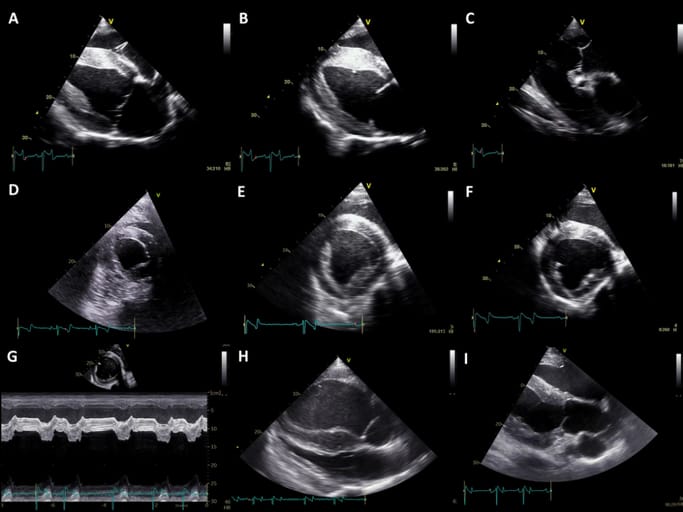- Veterinary View Box
- Posts
- Can You Trust Your Eye? Echocardiographic Subjectivity in Equine Pulmonary Hypertension
Can You Trust Your Eye? Echocardiographic Subjectivity in Equine Pulmonary Hypertension
JVIM 2025
Julia N. van Spijk, Hannah K. Junge, Christina Eberhardt, Natalie Wolf, Debora Vogt, Paula Zscherpe, Elena Herger, Manon Straub, Colin C. Schwarzwald
Background
Right heart (RH) evaluation via echocardiography in horses is critical but notoriously difficult due to complex right ventricular anatomy and limited acoustic windows. Pulmonary hypertension (PHT), a known driver of RH failure in humans, is under-investigated in equines. In the absence of validated quantitative parameters for horses, subjective assessment remains the primary method. This study aimed to evaluate inter- and intra-rater agreement of subjective RH size and function evaluation and determine its diagnostic value for PHT, particularly in relation to observer experience.
Methods
This retrospective study included 90 horses: 30 clinically normal, 30 with cardiac disease but no PHT, and 30 with Doppler-based evidence of PHT. Nine standard echocardiographic views were graded by nine observers (four experts and five beginners) for RH size, RH function, right atrium size, septal flattening and motion, and presence of PHT. Assessments were categorical (normal, mild, moderate, severe), and agreement metrics included percentage agreement and kappa statistics. Sensitivity and specificity of subjective assessments for detecting PHT were calculated.
Results
Inter-rater agreement was generally low (kappa = 0.21 overall), though higher among experts (k = 0.34) than beginners (k = 0.18). Intra-rater agreement exceeded 80% in experts but not in beginners. Subjective detection of RH abnormalities was more common in PHT horses (63% for size, 52% for function) but showed only fair accuracy. Specificity of subjective PHT diagnosis was high (95–100% in experts), while sensitivity was low (22–43%). Observers were more consistent in detecting severe PHT (e.g., PR Vmax > 3.0 m/s), and expert assessments were more reliable across the board.
Limitations
Doppler velocity thresholds, not direct pressure measurements, were used to classify PHT, introducing potential misclassification. Echocardiographic recordings were not optimized for RH assessment, and standard views were used without enhanced right-sided imaging. Observer training and lack of reference standards may have biased findings, and the sample size of observers was limited.
Conclusions
Subjective assessment of RH size and function in horses exhibits low interobserver agreement and poor sensitivity for PHT detection, particularly among less experienced observers. However, specificity is high in expert assessments, suggesting that while visual signs may confirm PHT, their absence cannot exclude it. These findings underscore the need for objective, quantitative echocardiographic tools and enhanced training for RH evaluation in equine cardiology.

The nine standard echocardiographic image planes provided as video clips to observers to grade right heart size and function, as well as pulmonary artery size, pulmonary artery distensibility, and the presence of pulmonary hypertension. (A) Right parasternal long axis four chamber view, focused on the left atrium; (B) Right parasternal long axis four chamber view, focused on the left ventricle (LV); (C) Right parasternal long axis right ventricular outflow tract view; (D) Right parasternal short axis view of the LV at the level of the apex; (E) Right parasternal short axis view of the LV at the level of papillary muscles; (F) Right parasternal short axis view of the LV at the level of the chordae tendineae; (G) Right parasternal short axis M-mode image of the LV at the level of the chordae tendineae; (H) Left parasternal long axis view of the aortic valve and LV; (I) Right parasternal long axis left ventricular outflow tract view.
How did we do? |
Disclaimer: The summary generated in this email was created by an AI large language model. Therefore errors may occur. Reading the article is the best way to understand the scholarly work. The figure presented here remains the property of the publisher or author and subject to the applicable copyright agreement. It is reproduced here as an educational work. If you have any questions or concerns about the work presented here, reply to this email.